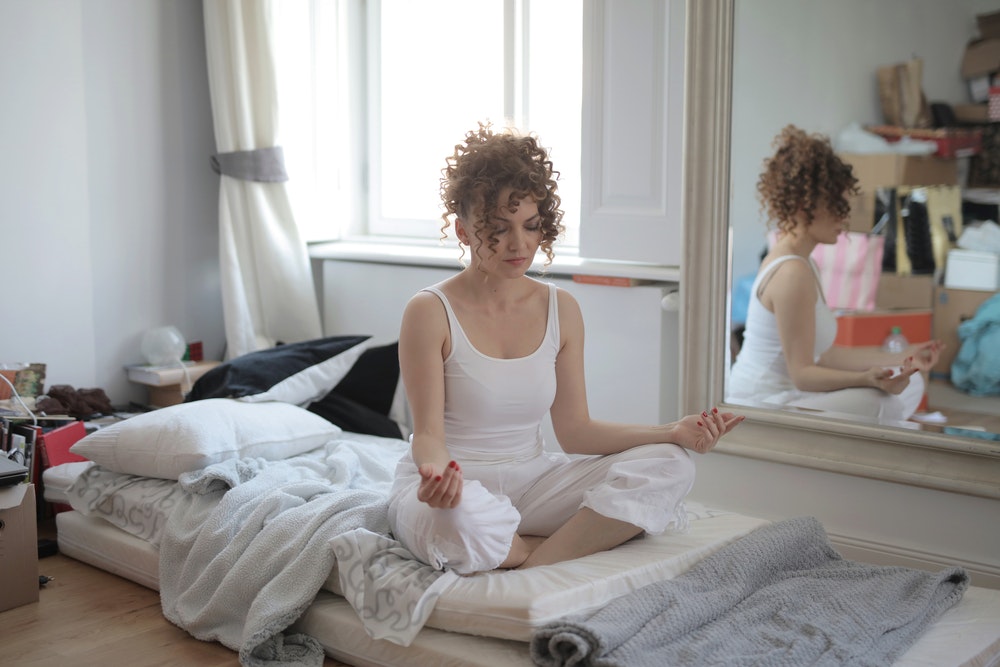I talk often about how to achieve true happiness through being present, which is something you learn with meditation, as well as the benefits of meditation on your health and your mind. To reiterate, meditation for beginners is easy, and will make you less anxious as well as many other benefits. The best part is, meditation is absolutely free. You get all the benefits just from closing your eyes and breathing.
OK, so it’s a little bit more complex than that, but actually it isn’t hard at all, I promise. In this article, I am going to explain how to meditate effectively, and outline five steps for meditation for beginners.
Choose a meditation place
The first step to meditation is obviously to find a place to use for meditation. I find that I just use my bedroom, however some people prefer outdoors or even in a spare room. Just find somewhere that you won’t be disturbed. It’s likely the bus or train is not the place to learn meditation.
Once you have found a good meditation place, we can then move on with how you should sit.
Sit comfortably
So, as I said, the next step in meditation for beginners is to sit. Now, you may have seen those images of people in lotus, etc however there really is no correct or wrong way to sit. It is whatever you are comfortable with. I prefer to sit on my floor, with my legs crossed. I don’t use a pillow or meditation stool, etc. I have also meditated sitting in a chair and that worked alright as well. No matter what, just make sure your back is straight so you can breathe in and out without feeling obstructed in any way.
You will want to find a comfortable position, as later on your meditation journey, you will be sitting in that same position, without moving at all, for ten, twenty even thirty minutes at a time. Your body will thank you if you get in the habit of sitting correctly.
Measure time
The third step is to use a timer or a meditation app to time your meditation. There are plenty of apps out there, I prefer Insight Timer personally, however I have heard good things about Headspace and Calm as well.
You can even just set a timer on your phone for however long you want. My suggestion is to try and meditate for just two minutes today. When I say today, I mean it. Don’t procrastinate; if you don’t do it today, you’ll likely never do it. Then as you feel more comfortable, add another 1-2 minutes per week. So this week, meditate for 2 minutes, then during next week try for three minutes, the following week four minutes, and continue to add a minute or two to progress until however long you need.
I would say the minimum daily meditation for most experienced meditators would be around 15 minutes per day.
Shut your eyes
The fourth step is to shut your eyes. Keep them shut. Yes, I know there are other meditation methods which can include open eyes, however it is much easier for beginners to learn to meditate with eyes fully shut for at least the start of their journey in meditation.
Breathe and focus
The final step of this beginner meditation is simply breathe and focus on it. Now, this may sound very simple, however many people start to then think too much about how to breathe, or how to sit, etc. I will often just take a few deep breaths just to get myself in the mood to meditate or just to get some fresh air into my lungs.
When you are meditating, you want to just breathe naturally and focus on your breath, in and out, in and out. Notice the time between when you release a breath and when you breathe in the next one. There may be a short pause between the breath in and the breath out, just watch how that feels as you go. This focus on your breath will eliminate most thoughts that enter your head.
At the beginning, don’t give up or be worried because you feel that you are bombarded with thoughts. This is what meditation solves over the longer term. It teaches you about being present and how to focus. People will find when they start to focus on the present, they will enjoy the environment around them more, rather than always thinking and being distracted with other things.
So when you breathe, focus on being aware. When a thought comes by, don’t worry or focus on it, just work on your breathing and let the thought wash over you and let it go.
Summary
Even people who have meditated for decades complain about wandering thoughts at times, so don’t sweat it. You are definitely not alone in this. Once your app or timer is up, then you can slowly return by opening your eyes and getting up from your seat or from the floor. So that’s all there is to meditation for beginners!







